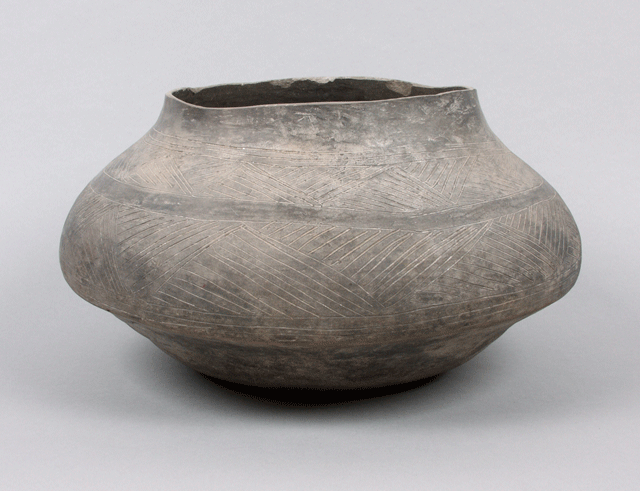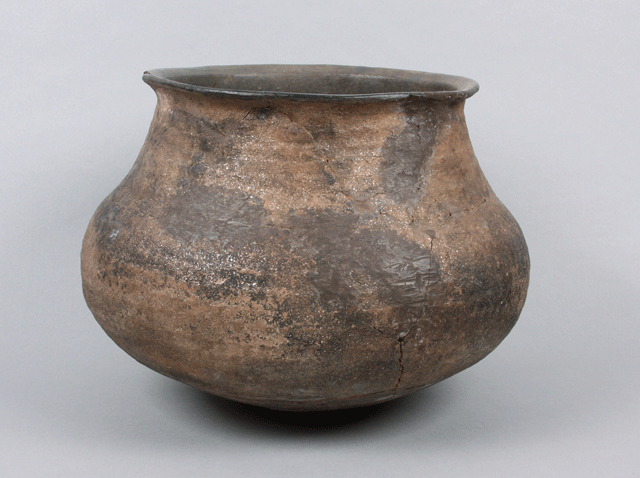

68.43.9, Potsui'i Incised jar, 39 centimeters (15 ½ inches)
in diameter
Found at San Gabriel de Yunque (A.D.
1598–1610)
UNM field school collection
Photograph by B. Bernard
Potsui'i Incised is a Pueblo Indian pottery type usually dated to A.D.
1450–1550, so its discovery at San Gabriel raises two
possibilities. The type may have lasted a half-century longer than
archaeologists assume, and in that case was obtained by the colonists
for their own use. Otherwise, the location may have been inhabited by
Pueblo Indians for decades before the Spanish showed up, and in that
case this pot is from pre-colonial deposits.
Potsui'i Incised is an example of "utility ware," meaning pottery created for cooking or food storage rather than for food service. In the Southwest, utility pottery was mostly unpainted, but nonetheless could be given "eye appeal" by texturing the surface and by other means. The next two photographs show additional utility pots from San Gabriel.

68.43.136, Micaceous Smeared Indented jar, 39 centimeters (15 ½
inches) in diameter
Found at San Gabriel de Yunque (A.D.
1598–1610)
UNM field school collection
Photograph by B. Bernard

68.43.137, Micaceous Smeared Indented jar, 37 centimeters (14 ½
inches) in diameter
Found at San Gabriel de Yunque (A.D.
1598–1610)
UNM field school collection
Photograph by B. Bernard
Help us build the content of this page! Please contact us about information you'd like to see, information you have, and anything else via the User Feedback link.
To return to the thumbnail on the San Gabriel page, please click here. To return to the thumbnail on the Pottery page, please click here.
All content copyright © Maxwell Museum of Anthropology, University of New Mexico. A high-resolution verson of this photograph may be ordered from the Maxwell Museum's photo archives. Please make note of the catalogue number. For more information please visit the photo archives web page
Page last revised on January 10, 2011. Please report problems to toh@unm.edu